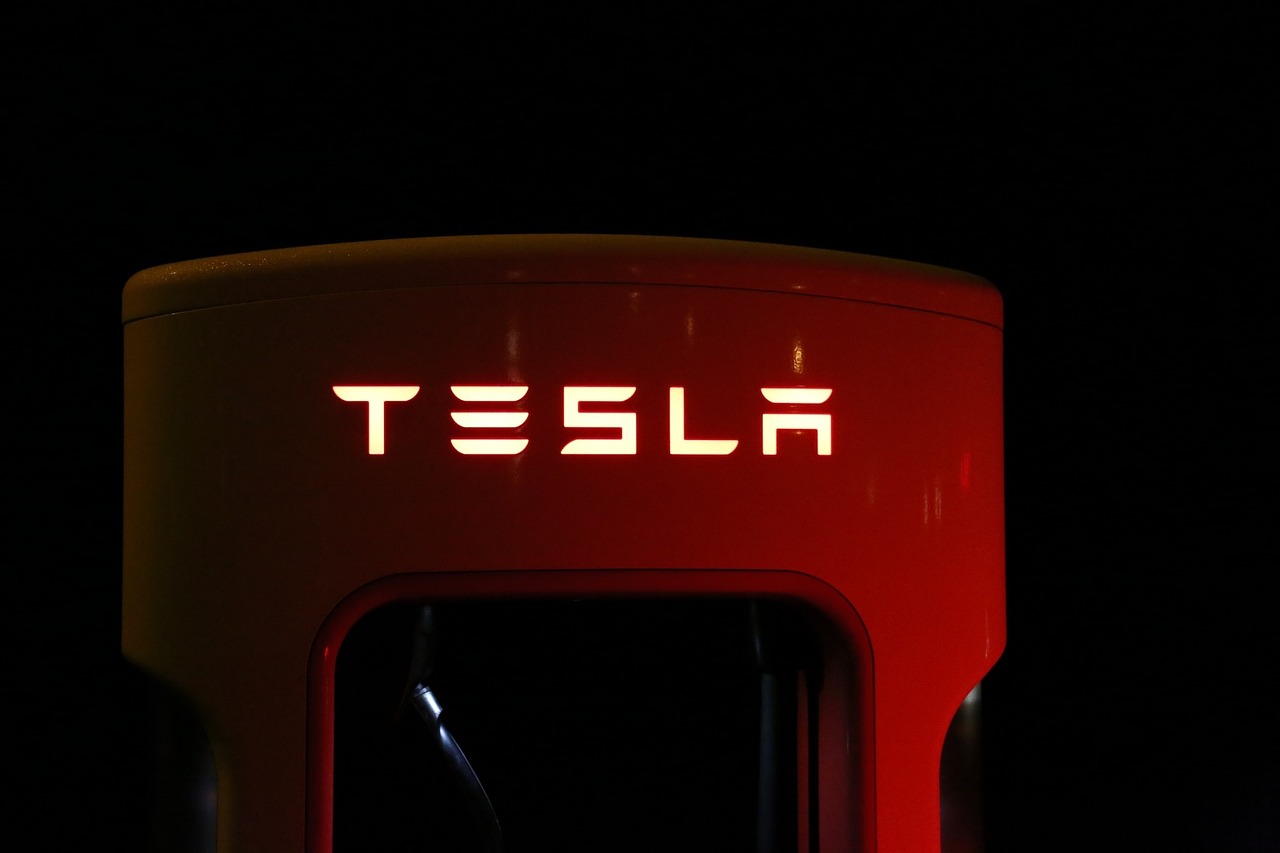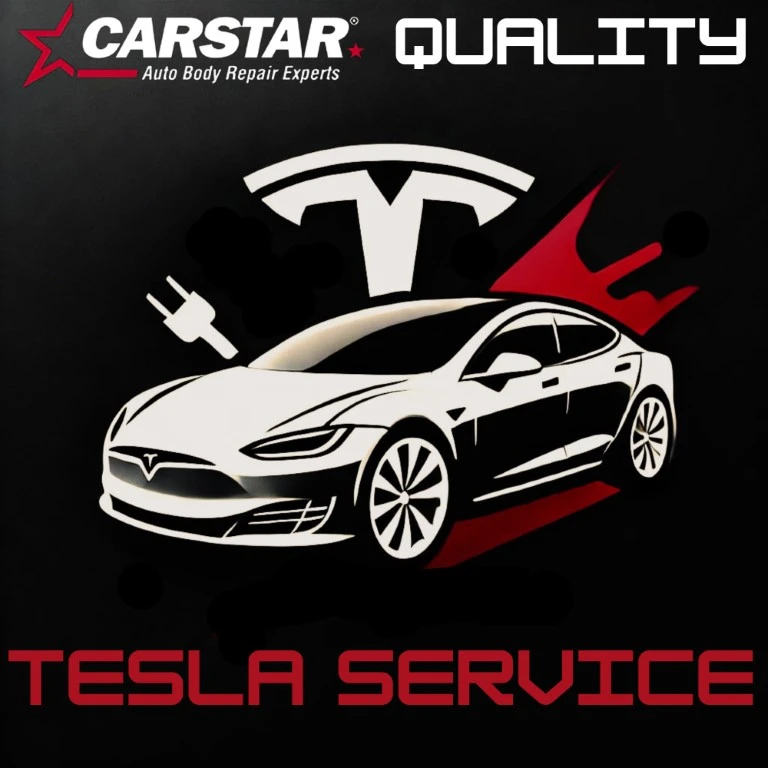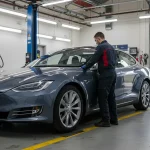In the ever-evolving landscape of electric vehicles, the decision to buy or sell a Tesla today encapsulates more than just a simple transaction; it embodies a choice towards innovation and sustainability. With Quality Tesla Service and Carstar Quality Auto Body & Service standing at the forefront of Tesla maintenance and repair, you are assured of unparalleled expertise and quality service. These establishments provide a comprehensive range of services equipped with state-of-the-art technology, certified technicians, and genuine Tesla parts, tailored to maintain your vehicle’s optimal condition and performance. Whether you find yourself in Feasterville-Trevose, PA, or require the extensive offerings of a well-established, nationwide franchise, these premier centers ensure that your investment is well-maintained, supporting your decision to buy or reaffirming the value if you decide to sell.
Understanding Tesla’s Current Market Position
Overview of Tesla’s market performance
Tesla’s market performance has remained a centerpiece of discussion among investors and enthusiasts alike. As a pioneer in the electric vehicle (EV) market, Tesla has seen exponential growth, significantly outpacing many traditional automotive stocks. This growth is attributable to innovative product offerings, a strong emphasis on sustainability, and Elon Musk’s visionary leadership. However, market volatility and emerging competitors present ongoing challenges that Tesla must navigate to maintain its market lead.
Recent financial results and their implications
Tesla’s recent financial results showcase both opportunities and potential pitfalls. Robust revenue growth and profitability have exceeded Wall Street expectations in several quarters, driven by increased vehicle deliveries and expansion into new geographic markets. However, supply chain disruptions and fluctuating battery prices pose risks to Tesla’s cost structure and overall margins. Investors closely monitor these results to gauge Tesla’s long-term financial health and scalability.
Market trends affecting Tesla
A number of market trends are shaping Tesla’s operational landscape. Firstly, global shifts toward clean energy and emissions reduction policies benefit Tesla, as governments worldwide incentivize EV adoption. Secondly, consumer preferences are increasingly favoring electric over internal combustion engine vehicles, boosting demand for Tesla’s products. However, the global semiconductor shortage and competition from both traditional automakers transitioning to EVs and new entrants pose significant challenges.
Tesla’s Product Innovations and Updates
Recent product launches and updates
Tesla continually innovates, with recent product launches enhancing its market stature. The introduction of the Model Y, an all-electric compact SUV, and updates to existing models with improved battery life and software capabilities, underscore Tesla’s commitment to innovation. Additionally, the adoption of cutting-edge technologies like Autopilot and Full Self-Driving (FSD) software further distinguishes Tesla from competitors.
Upcoming Tesla models and technologies
Anticipation is high for Tesla’s upcoming models and technologies. The Cybertruck, with its unconventional design and robust performance metrics, is eagerly awaited. Similarly, the Roadster and Semi truck promise to disrupt their respective segments. Tesla’s advancements in battery technology, highlighted at its Battery Day event, suggest future models will feature longer ranges and reduced charging times.
Impact of innovations on market perception
Tesla’s relentless focus on innovation significantly impacts market perception, positioning the brand as a leader in the EV sector. These innovations reinforce Tesla’s commitment to sustainability, safety, and convenience, strengthening its appeal among environmentally conscious consumers and technophiles. Consequently, Tesla’s brand loyalty and market share continue to grow.

This image is property of pixabay.com.
Competitive Landscape
Tesla’s position among its competitors
Tesla’s pioneering role and rapid scale-up in the EV market have positioned it as a formidable competitor. Unique selling propositions, such as its Supercharger network, high-performance vehicles, and integration of solar technologies, set Tesla apart. While Tesla leads in several key metrics, including range and technology, the gap is narrowing as competitors invest heavily in EV capabilities.
New entrants in the electric vehicle market
The EV market is witnessing an influx of new entrants, ranging from startups like Rivian and Lucid Motors to traditional automakers like Volkswagen and Ford, committing significant resources to electric mobility. These new entrants are diversifying the competitive landscape, challenging Tesla’s market dominance, and spurring further innovation.
Comparison of product offerings
When comparing product offerings, Tesla’s vehicles are often praised for their performance, technological features, and design. However, as the EV market matures, competitors are closing the gap, offering comparable or superior specifications in certain aspects. Price points, range, and charging infrastructure are becoming increasingly competitive, enhancing consumer choices.
Investor Sentiment and Market Analysis
Analyst ratings and investor sentiment
Analyst ratings and investor sentiment toward Tesla are mixed, reflecting the company’s high growth potential and associated risks. While some analysts remain bullish, citing Tesla’s market leadership and innovation, others express concern over its valuation and emerging competition. Investor sentiment tends to fluctuate based on Tesla’s financial performance, market dynamics, and Elon Musk’s public statements.
Institutional investment trends
Institutional investment trends in Tesla reveal both growing confidence and caution. Several prominent investment funds have increased their stakes, betting on Tesla’s long-term growth trajectory. Conversely, concerns over valuation and market saturation have prompted some to reduce their exposure. This dichotomy underscores the debate over Tesla’s future prospects.
Impact of global economic factors on Tesla’s stock
Tesla’s stock is susceptible to global economic factors, including interest rates, trade policies, and commodity prices. For instance, rising interest rates could dampen investor enthusiasm for growth stocks like Tesla. Conversely, policies promoting green energy and EV adoption can enhance Tesla’s appeal. Monitoring these factors is crucial for understanding Tesla’s stock performance.

This image is property of pixabay.com.
Regulatory and Environmental Considerations
Government regulations affecting Tesla
Tesla operates within a complex regulatory environment, with government policies significantly impacting its business. Regulations concerning vehicle emissions, safety standards, and autonomous driving technologies can either pose challenges or create opportunities for Tesla. Additionally, trade policies and tariffs can affect Tesla’s cost structure and international market expansion efforts.
Tesla’s role in environmental sustainability
Tesla’s mission to accelerate the world’s transition to sustainable energy underscores its significant role in environmental sustainability. By promoting electric vehicles, solar energy, and battery storage, Tesla contributes to the reduction of greenhouse gas emissions and fossil fuel dependence. Tesla’s commitment to sustainability is a key driver of its brand and corporate identity.
Incentives for electric vehicle manufacturers and buyers
Various government incentives for EV manufacturers and buyers support Tesla’s growth. Tax credits, rebates, and grants aimed at reducing the purchase cost of electric vehicles boost consumer demand for Tesla’s products. Similarly, subsidies for EV charging infrastructure development enhance Tesla’s Supercharger network’s viability. Navigating these incentives effectively is vital for Tesla’s strategic planning.
Technical Analysis of Tesla Stock
Stock performance analysis
Tesla’s stock performance has been marked by significant volatility, reflecting investor sentiment, market trends, and corporate developments. Periods of rapid growth have alternated with corrections, as investors weigh Tesla’s growth prospects against valuation concerns. Analyzing Tesla’s stock performance requires considering various technical indicators and market conditions.
Key support and resistance levels
Identifying key support and resistance levels is crucial for understanding potential price movements of Tesla’s stock. Support levels represent price points where buying interest is sufficiently strong to prevent further declines, while resistance levels indicate where selling pressure overcomes buying interest, capping price gains. These levels guide investors in making informed decisions.
Volume analysis and price trends
Volume analysis, alongside price trends, provides insights into Tesla’s stock behavior. High trading volumes accompanying price increases may indicate strong buyer support, while volume declines during price drops suggest waning selling pressure. Analyzing these trends helps investors gauge market sentiment and potential directional shifts in Tesla’s stock price.

This image is property of pixabay.com.
Valuation Metrics
Current valuation of Tesla’s stock
Tesla’s current stock valuation is a subject of intense debate among investors. Metrics such as price-to-earnings (P/E) ratio, price-to-sales (P/S) ratio, and market capitalization are commonly used to assess its valuation. Despite high valuation metrics suggesting overvaluation by traditional standards, many investors believe Tesla’s growth potential justifies its premium.
Comparison with historical valuations
Comparing Tesla’s current valuation with historical valuations reveals its market perception over time. Periods of rapid stock price appreciation have often led to concerns about unsustainable valuations, while corrections have provided buying opportunities for long-term investors. Understanding these historical trends is essential for contextualizing Tesla’s current valuation.
Valuation models and future earnings potential
Various valuation models, including discounted cash flow (DCF) analyses and comparative company analyses, are employed to estimate Tesla’s future earnings potential. These models consider Tesla’s revenue growth, margin expansion, and market expansion opportunities. While modeling assumptions significantly impact valuation estimates, they provide a framework for evaluating Tesla’s financial prospects.
Risks and Challenges
Supply chain and production challenges
Tesla faces ongoing supply chain and production challenges, including raw material shortages, logistics disruptions, and manufacturing bottlenecks. These challenges can impact Tesla’s ability to meet demand, affecting its financial performance and reputation. Strategic supply chain management and production optimization are critical for mitigating these risks.
Market competition risks
The intensifying competition in the EV market poses significant risks to Tesla. As established automakers and new entrants increase their focus on electric mobility, Tesla must continually innovate and differentiate its offerings to maintain its competitive edge. Navigating these competitive dynamics is crucial for sustaining Tesla’s market position.
Potential impacts of global economic uncertainties
Global economic uncertainties, such as geopolitical tensions, trade disputes, and fluctuations in currency exchange rates, can adversely affect Tesla. These uncertainties may impact Tesla’s international sales, supply chain costs, and overall financial stability. Proactively managing these risks is essential for Tesla’s long-term success.
Opportunities for Growth
Expansion into new markets
Tesla’s expansion into new geographic markets presents significant growth opportunities. Emerging markets with growing middle-class populations, such as India and Southeast Asia, offer untapped potential for Tesla’s vehicles and energy products. Tailoring strategies to local market conditions and consumer preferences is key to successful expansion.
Diversification of product line
Diversifying its product line allows Tesla to capture a broader customer base and mitigate risks associated with market saturation. Expanding into different vehicle segments, such as affordable compact cars or commercial vehicles, alongside advancements in solar energy and battery storage solutions, can drive Tesla’s future growth.
Strategic partnerships and collaborations
Strategic partnerships and collaborations can accelerate Tesla’s innovation and market penetration. Collaborating with technology firms on autonomous driving software, partnering with governments on infrastructure projects, or forging alliances with other automakers for technology sharing can enhance Tesla’s competitiveness and market reach.
Future Outlook for Tesla
Expected technological advancements
Tesla’s future outlook is closely tied to its ability to deliver technological advancements. Continued progress in battery technology, autonomous driving capabilities, and renewable energy solutions will be critical for sustaining Tesla’s market leadership. Investing in research and development and attracting top talent are pivotal for driving these advancements.
Market expansion plans
Tesla’s market expansion plans are geared toward reinforcing its global presence and capturing new segments. Accelerating the rollout of its charging infrastructure, entering new markets with favorable EV policies, and responding to evolving consumer needs will support Tesla’s growth objectives. Strategic market analysis and adaptation are necessary for successful expansion.
Long-term investment outlook
The long-term investment outlook for Tesla hinges on its ability to navigate the challenges and capitalize on the opportunities outlined previously. While Tesla presents a unique growth story in the transition to sustainable energy, investors must carefully consider its valuation, competitive landscape, and external factors impacting its business. A balanced assessment of Tesla’s strengths and potential headwinds will inform a reasoned investment perspective.
In conclusion, Tesla stands at a pivotal juncture, with its innovative products, market expansion strategies, and commitment to sustainability shaping its future. As Tesla navigates the dynamic automotive and energy markets, its ability to adapt and innovate will be crucial for achieving long-term success. For investors and stakeholders, closely monitoring Tesla’s financial health, market position, and strategic initiatives remains paramount.







